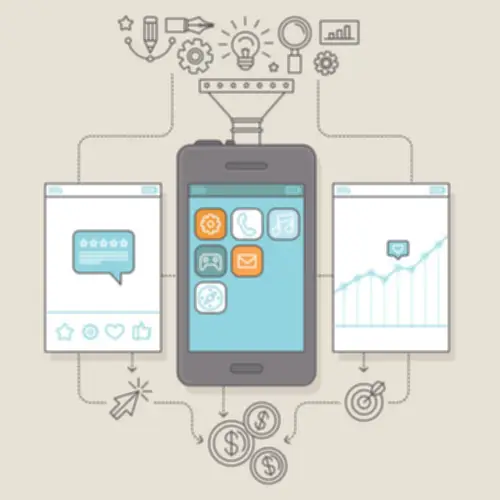The Complete Information To The 7 Phases Of Application Lifecycle Administration Alm Yoroflow
A Scrum is a form of implementation of the Agile methodology that helps growth teams construction complex project requirements. To complete assigned duties, Scrum teams work in sprints, which is a interval that lasts between 2 to 4 weeks. In the past, the most well-liked growth mannequin was the Waterfall model, which entailed pushing out adjustments to applications in large, infrequent iterations. Today, Waterfall has largely given approach to Agile software program development, which inspires groups to interrupt application updates into small chunks of labor and handle them utilizing brief sprints. Agile is commonly more environment friendly for builders as a end result of it lets them set small, manageable targets. It can even benefit users, who obtain updates on a more regular foundation and wouldn’t have to contend with huge software overhauls that hit them suddenly.
Stage-5: Product Testing And Integration
Boost efficiency by reducing bottlenecks, prioritizing duties, and fostering a collaborative work setting. Use instruments and strategies like Agile retrospectives or Kanban boards to keep workflows smooth. Tools like automated testing software, CI/CD pipelines, and workflow automation platforms can help streamline repetitive tasks. Regular communication with stakeholders is essential for managing expectations and securing buy-in.
Stage 6 Deployment
The baseline may include start date, finish date, phase/stage duration, and finances knowledge. These baseline assists the project manager in monitoring performance. Teams can implement the seven levels of the SDLC using a wide range of totally different software program growth models – meaning design methods that guide implementation and arrange each set of modifications to the appliance. The system growth life cycle (SDLC) is a fancy project administration mannequin that encompasses system or software program creation from its initial idea to its finalized deployment and maintenance. In this stage, the issue or pain the software targets is clearly outlined. First, developers and other group members outline aims for the system and draw a rough plan of how the system will work.
In other words, it defines the mandatory steps needed to take a project from the concept or concept stage to the actual deployment and further upkeep. The 7 levels of the product development lifecycle are ideation, analysis, planning, design, growth, testing, launch, and upkeep. These steps guide teams from initial concept to ongoing product refinement. Application Lifecycle Management (ALM) is a structured approach to managing the life cycle of software applications, from inception to retirement. It includes a set of methodologies, tools, and processes that guarantee efficient improvement, deployment, and maintenance of purposes. The software launch life cycle is the process phases of the system development life cycle of growing, testing, and distributing a software program product (e.g., an operating system).
Many of these distributors even have a robust concentrate on figuring out and de-bugging methods that may help the process of testing in software development life cycles. In many instances, SDLC teams make the most of a wide range of software program solutions to support the varying stages. For example, requirements could also be gathered, tracked and managed in a single answer whereas testing use cases could happen in a totally different solution. While a selection of Agile methodologies have been developedover the past 20 years, one of the most widespread is known as the Scrummethod. The thought was to incrementallydeliver deliberate performance earlier within the growth cycle. Scrum focuses ateam�s efforts on quick and incremental delivery of the product with regularfeedback from stakeholders.
The detail design and growth is liable for producing the product, course of and materials specs and will lead to substantial changes to the development specification. Systems analysis and design (SAD) can be thought-about a meta-development activity, which serves to set the stage and certain the issue. SAD interacts with distributed enterprise structure, enterprise I.T. Architecture, and enterprise structure, and relies heavily on concepts corresponding to partitioning, interfaces, personae and roles, and deployment/operational modeling to reach at a high-level system description. This high-level description is then damaged down into the elements and modules which may be analyzed, designed, and constructed individually and integrated to perform the enterprise goal.
This helps to find problems as early and comprehensively as attainable, reducing the fee and danger of later modifications. SDLC (Software Development Life Cycle) is the software improvement life cycle model, which is the life cycle of software program from its creation to its scrapping. It emphasizes step-by-step progress, and each stage should be defined, labored on, reviewed, and documented for communication or reference to enhance the quality of the software program. During the testing part, safety checks may be minimal and restricted to scanning and penetration testing, which may fail to identify more sophisticated safety flaws. Because this part includes coding, it is crucial section of the SDLC for the developer group.

The deliverable from the engineering organization is frequently in the form of a golden master media used for duplication or to produce https://www.globalcloudteam.com/ the image for the net. Let us get acquainted with the prime levels or phases of a software program growth lifecycle directly. Feedback from users is collected, and primarily based on this input, the product may be released as it is or with extra enhancements to enhance its utility for patrons.
Models and frameworks have been developed to guide companies via an organized system development life cycle. Today, the standard technology trends approaches to know-how system development have been adjusted to fulfill the ever-changing, complex needs of every unique organization and their users. Below you can see sequential steps to SDLC, but every firm will vary of their course of. In truth, in lots of cases, SDLC is considered a phased project mannequin that defines the organizational, personnel, coverage, and budgeting constraints of a big scale techniques project.
Systems Design
AI monitoring tools make positive that best practices are rigorously adhered to. Post-deployment, purposes require regular updates, bug fixes, and performance enhancements to remain practical and secure. In this blog, we’ll discover the 7 stages of ALM and how low-code is beneficial to ALM.
- For instance, rapid application growth, or RAD, breaks development work into small initiatives.
- Consequently, the project groups involved reply instantly to stakeholder suggestions throughout the SDLC process.
- Modular design reduces complexity and allows the outputs to describe the system as a group of subsystems.
Similarly, automated and cloud-based platforms, which simulate testing environments, take a major quantity of handbook time out of this stage of the system growth life cycle. Selenium, a browser testing tool, is one in style instance of such a platform. There are varied approaches to testing, and you’ll probably undertake a combine of strategies during this section. Behavior-driven growth, which makes use of testing outcomes based mostly on plain language to incorporate non-developers within the process, has turn into more and more in style. In the development stage of SDLC, the system creation course of produces a working answer.
SDLC and SAD are cornerstones of full life cycle product and system planning. The design stage draws on technical specifications for the app that teams established during the evaluation stage. In truth, some descriptions of the stages of the SDLC treat analysis and design as a single part.

While there are some drawbacks, SDLC has confirmed to be some of the effective methods for efficiently launching software program products. Mostly used for creating and delivering a broad range of ideas, this model completely fits the shoppers who don’t have a transparent idea or vision of what their last product ought to seem like. As the business grows, count on to see even more emphasis on customer-centric design, sustainability, and speedy innovation.
Another important instance ofa sequential methodology is the Vee mannequin proven in Figure4. Since it was first developed in the Nineteen Eighties,the Vee model has been refined and applied in many alternative industries. Similar to the Waterfall model, every next stage of the V mannequin begins only when the earlier one has been completed. On the other hand, Lean methodology gives the topmost priority to the elimination of waste.
A system is any data technology element – hardware, software, or a mix of the 2. Each system goes by way of a improvement life cycle from preliminary planning by way of to disposition. This stage includes the development of detailed designs that brings initial design work into a accomplished form of specs. This work includes the specification of interfaces between the system and its supposed setting, and a complete analysis of the techniques logistical, upkeep and help necessities.


Leave a Reply